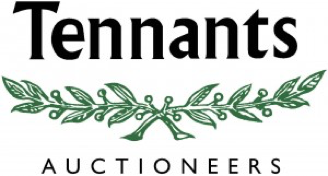How do you know? A question that all professionals hear at some point, whatever their role, but in the jewellery department of a busy auction house, one we hear frequently. How do you know that bracelet is gold? How do you know that is a diamond? How do you know this brooch is Victorian?
It’s a perfectly valid question, and we are always happy to explain why we believe an item dates from 1990 rather than 1890. To determine the age of an item, or indeed whether we can date it at all, we look for clues.
Numerous excellent texts have been written on jewellery over the years, but this short blog gives a whistle-stop tour through the last 300 years - the period during which most of the jewellery we handle was made. Rather than covering every style, nuance, or quirk, we will discuss the key characteristics of the main stylistic eras to give a foundation that allows the jewellery enthusiast to understand what clues we look for to help us determine the age of a piece of jewellery.
Each period has a generally accepted time frame, although of course one style or technique did not cease when the next commenced so there is some overlap.
GEORGIAN JEWELLERY (1714-1837)
Metals
The main metals used were silver, gold (and sometimes the two were combined), steel and other alloys such as pinchbeck, a form of brass made to resemble gold.
Stones
Popular stones were diamonds, pearls, sapphires, rubies, paste (glass), topaz and garnet.
Diamonds and gemstones were cut with a chunkier feel than later examples. Cushion shaped stones often appeared, which were slightly square, or shaped like an old-fashioned television screen. Diamonds often had a deep pavilion (the ‘v’ shaped bottom of the stone) and small table (the central facet to the top of the stone) or were rose cut.
Settings
Stones were often set in closed-back settings, so they can’t be viewed from the reverse. Sometimes these settings were lined with foil to provide or enhance the apparent colour of the stone or give it more sparkle by reflecting light back through the stone.
Style
Less sophisticated tools and more processes being done by hand gives Georgian jewellery a more rustic, less finessed feel than later pieces.


A Georgian Garnet, Citrine, and Split Pearl Brooch (front and back)
Sold for £220 plus buyer’s premium
VICTORIAN JEWELLERY (1837 – 1901)
Metals
Silver continued to be used in jewellery, and diamonds were often placed in silver settings on gold mounts. This clever combination of metal stopped the white stones getting a yellow cast from gold settings, whilst the gold mounts gave more strength than if made with silver alone. Platinum, which is very strong, began to be used in very high-end jewellery right at the end of the Victorian period, so features more in later pieces.
Stones
Garnets, amethysts, turquoise, sapphires and pearls continued to be popular, and diamonds, which experienced a boom in availability, featured more often than before. Once Queen Victoria entered into mourning, jet jewellery soared in popularity.
Diamond cutting become more regular and precise towards the end of the Victorian era. This was partly due to improvements in technology, and partly due to the discovery of new diamond sources which increased the volume of good quality stones available.
Settings
Jewellery settings now sometimes had open backs, to allow more light through and improve the appearance of stones.
Style
Bows, swags, and large statement items were fashionable, and animal or insect jewellery was popular (BLOG: Victorian Insect Jewellery).
Versatility of function was also characteristic of the era. Tiaras could split down into several brooches, a bracelet, hair pins, a pendant or any combination of these elements that allowed the wearer multiple options. Even more modest items often had a dual purpose; for example, a brooch that transformed into a pendant with the removal of a pin and attaching a pendant loop.
Manufacturing moved away from artisan or handmade items, and in the later part of the century some jewellery, for example 9 carat gold brooches, were being mass produced.

A Late 19th Century Diamond Bow Brooch
Estimate: £12,000-18,000 plus buyer’s premium
Fine Jewellery, Watches & Silver Sale 11th November 2023
ART NOUVEAU JEWELLERY (1890 – 1910)
Metals
Silver and gold were both used in Art Nouveau jewellery.
Stones
Pearls, turquoise, amethysts, citrines and opals were key stones of the era, but many others were also employed as supporting stones in the design rather than a centrepiece stone.
Settings
Stones were set in finer settings than before; delicacy and lightness were the tone of the era.
Style
Art Nouveau jewellery overlaps with the Edwardian period in date but is very different in style.
Free-flowing forms were used, rather than symmetrical and geometric designs, and motifs were inspired by nature, combining flora and fauna with whimsical features.

An Art Nouveau Enamel and Seed Pearl Brooch
Sold for £150 plus buyer’s premium
EDWARDIAN JEWELLERY (1901 – 1915)
Metals
Platinum fronted settings on gold, or platinum alone were the most commonly used metals in jewellery from the Edwardian era.
Stones
Diamonds and pearls were the most popular stones for jewellery.
The cut of diamonds and gemstones became more regular and symmetrical. The round ‘brilliant’ cut we know today was perfected by 1910 and began to soar in popularity.
Settings
Fine, detailed settings included wirework, filigree decoration and millegrain settings, which could only be achieved once platinum began to be used in jewellery in the late 1890s. These became very fashionable.
Style
Edwardian jewellery was characterised by delicate, intricate, and feminine pieces, with plenty of elegance and movement.

A Pair of Edwardian Pearl and Diamond Drop Earrings
£400-600 plus buyer’s premium
Fine Jewellery, Watches & Silver Sale 11th November 2023
ART DECO JEWELLERY (1920 - 1945)
Metals
White metal, usually platinum, dominated Art Deco jewellery design.
Stones
Monochromatic stones were popular, so diamonds, pearls and onyx were in high demand. Sometimes black enamel was used in place of onyx.
However, running parallel was the ‘tutti frutti’ style of Cartier, and other mixed-colour combinations that were popular in the period, in which sapphires, rubies and emeralds were used.
Settings
Stones were set in trailing, linear settings to create long-length earrings and necklaces that suited cropped hairstyles and the straight, simple lines of the tailoring of the era.
Brooches that split in two for greater versatility were also popular.
Style
Angular, symmetrical designs and geometric shapes define this period.

A Diamond Bracelet, circa 1920
Estimate: £8,000-12,000 plus buyer’s premium
Fine Jewellery, Watches & Silver Sale 11th November 2023
MODERN (1970 – present)
Metals
In the modern era, anything goes in terms of metals, gemstones and styles!
Since 1999 the date letter has no longer been compulsory in a hallmark.
Stones
New cuts of diamonds and gemstones have become popular, including the princess cut, the radiant cut as well as all manner of fancy shapes.
Settings
Jewellery has become more affordable thanks to cost saving measures of some modern jewellers, for example ring shanks are now sometimes made hollow and lighter settings save on material.
Style
Jewellery has become more disposable, and the fashion jewellery market is very buoyant allowing people to re-define their style as frequently as they wish.

A Pair of Ruby and Diamond Spray Earrings
£12,000-18,000 plus buyer’s premium
Fine Jewellery, Watches & Silver Sale 11th November 2023
If you would like to discuss consigning Jewellery for auction, please contact the Jewellery Department or submit an online valuation.


















